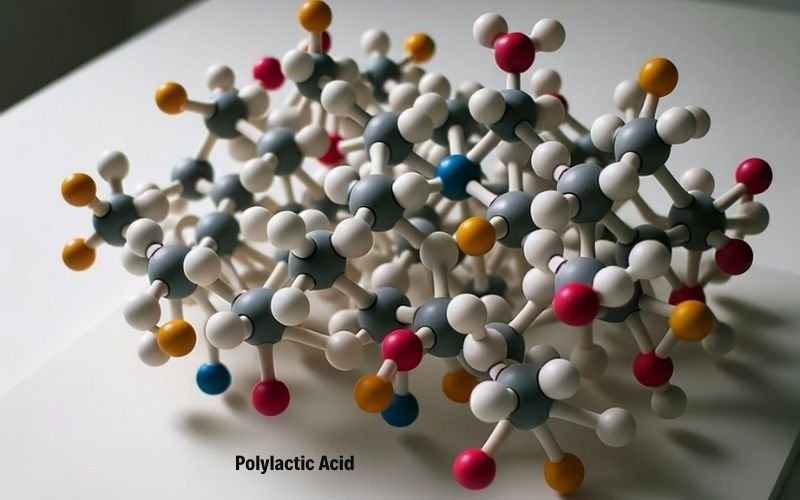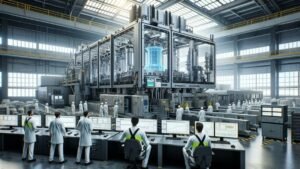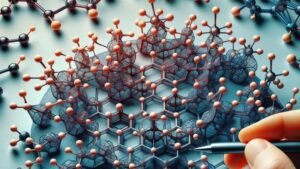Panimula
Sa isang panahon kung saan ang mga alalahanin sa kapaligiran ay tumatagal sa entablado, ang paghahanap para sa mga alternatibong eco-friendly sa tradisyonal na plastik ay humantong sa paglitaw ng mga makabagong materyales tulad ng polylactic acid (PLA). Sa post na ito ng blog, makikita natin ang lupain ng PLA, paggalugad ng mga pinagmulan, katangian, aplikasyon, at epekto sa kapaligiran. Ang aming layunin ay upang magaan ang ilaw sa kung paano ang PLA ay humuhubog sa hinaharap ng plastik.
Ano ang polylactic acid (PLA)?
Ang polylactic acid, o PLA, ay isang biodegradable at bioactive thermoplastic na nagmula sa mga nababagong mapagkukunan tulad ng mais starch o tubo. Nabuo ito sa pamamagitan ng polymerization ng lactic acid at nakatayo mula sa maginoo na plastik dahil sa pambihirang biodegradability at compostability.
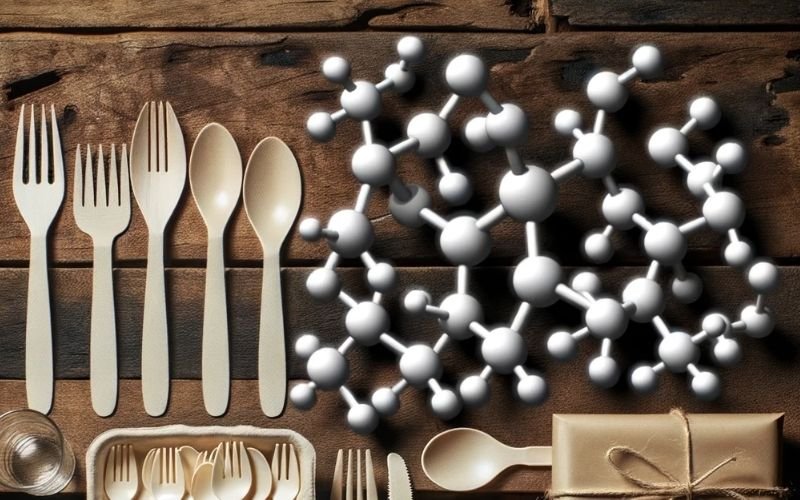
Mga katangian ng PLA
Ang PLA ay nagtataglay ng maraming mga pangunahing katangian na ginagawang isang nakakahimok na alternatibo sa tradisyonal na plastik:
- Transparency at hitsura: Ang PLA ay kilala para sa transparency nito, na ginagawang angkop para sa mga aplikasyon kung saan ang mga aesthetics ay pinakamahalaga.
- Lakas at higpit: Nagpapakita ito ng mahusay na lakas at higpit, na nakikipagkumpitensya sa ilang maginoo na plastik tulad ng alagang hayop.
- Paglaban sa init: Habang ang PLA ay maaaring makatiis ng katamtaman na temperatura, maaari itong mabago sa mas mataas na temperatura kung ihahambing sa mga plastik na tulad Polypropylene (PP).
- Mga Katangian ng Barrier: Ang PLA ay maaaring magbigay ng sapat na mga katangian ng hadlang para sa ilang mga aplikasyon, kahit na maaaring mangailangan ito ng mga pagbabago para sa higit pang mga hinihingi na mga kinakailangan.
Proseso ng Paggawa
Ang paggawa ng PLA ay nagsisimula sa pagkuha ng mga mabubuong asukal mula sa mga pananim tulad ng mais o tubo. Ang mga asukal na ito ay pagkatapos ay nabago sa lactic acid sa pamamagitan ng isang proseso ng pagbuburo. Kasunod nito, nangyayari ang polymerization ng PLA, na nagreresulta sa pagbuo ng mga resin pellets na ginamit sa iba't ibang mga aplikasyon. Ang isang kapansin-pansin na bentahe ng produksiyon ng PLA ay ang nabawasan na bakas ng carbon, dahil umaasa ito sa mga nababago na mapagkukunan at kumonsumo ng mas kaunting enerhiya kaysa sa mga plastik na batay sa petrolyo.
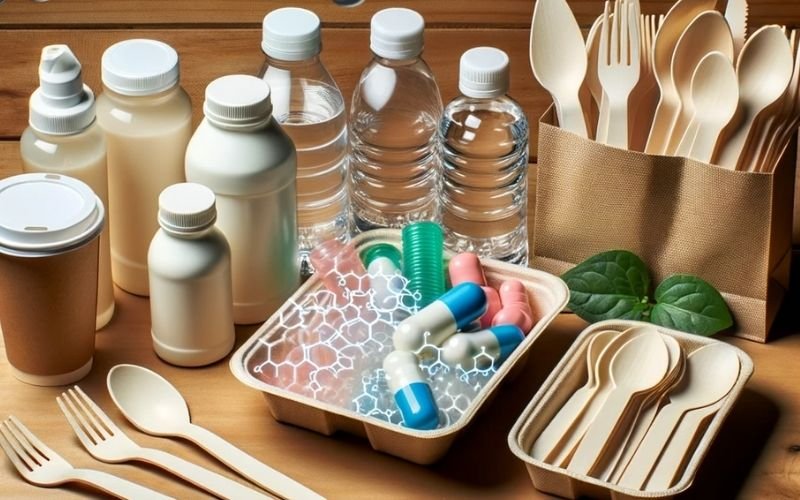
Mga aplikasyon ng PLA
Ang kakayahang magamit ng PLA ay humantong sa pag -aampon nito sa magkakaibang mga industriya at aplikasyon:
- Packaging ng Pagkain: Ang PLA ay madalas na ginagamit para sa mga lalagyan ng pagkain, cutlery, at kahit na mga pelikulang pagkain dahil sa biodegradability at hindi nakakalason na kalikasan.
- 3D Pagpi -print: Ang kadalian ng pag -print at biodegradability ay gumawa ng PLA na isang paboritong sa pamayanan ng pag -print ng 3D para sa paglikha ng mga prototypes, laruan, at mga artistikong piraso.
- Mga Tela at Kasuotan: Ang mga tela na batay sa PLA ay umuusbong bilang napapanatiling mga kahalili sa industriya ng fashion, na nag-aalok ng mga pakinabang tulad ng paghinga at kahalumigmigan-wicking.
- Mga aparatong medikal: Ang biocompatibility ng PLA ay ginagawang angkop para sa mga medikal na aplikasyon tulad ng mga sutures at mga sistema ng paghahatid ng gamot.
Epekto sa Kapaligiran
Nag -aalok ang PLA ng mga makabuluhang benepisyo sa kapaligiran:
- Nabawasan ang mga paglabas ng gas ng greenhouse: Ang produksiyon ng PLA ay bumubuo ng mas kaunting mga paglabas ng gas ng greenhouse kumpara sa mga plastik na batay sa petrolyo.
- Biodegradability at compostability: Ang PLA ay maaaring mag -biodegrade sa ilalim ng mga tiyak na kondisyon, pagbabawas ng plastik na basura sa mga landfill at karagatan.
- Nabawasan ang pag -asa sa fossil fuel: Ang pag -asa ng PLA sa mga nababago na mapagkukunan ay bumababa sa aming pag -asa sa mga fossil fuels.
Mahalagang tandaan na ang mahusay na biodegradation ng PLA ay nangangailangan ng mga tiyak na kondisyon ng pag -compost ng industriya, na maaaring hindi magagamit sa buong mundo.
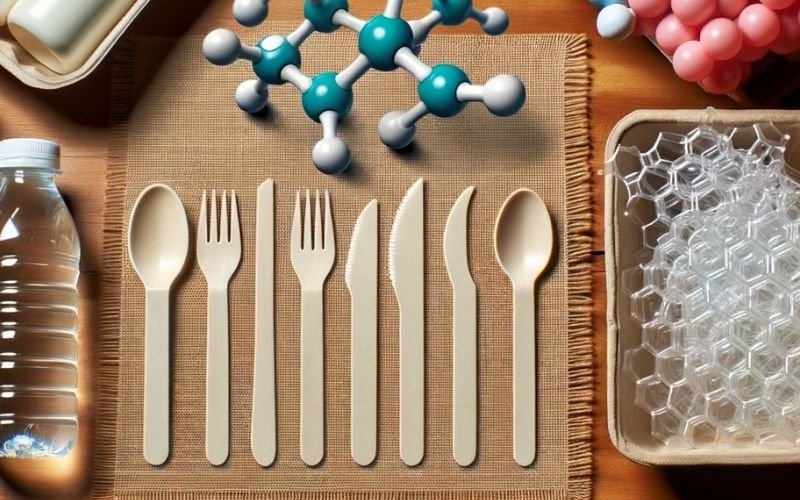
PLA kumpara sa tradisyonal na plastik
Upang mas maunawaan ang mga pakinabang ng PLA, ihambing natin ito sa tradisyonal na plastik:
| Ari-arian | PLA | PET | Pp |
|---|---|---|---|
| Biodegradability | Oo | Hindi | Hindi |
| Transparency | Mataas | Mataas | Mababa |
| Lakas at higpit | Mabuti | Mahusay | Mabuti |
| Paglaban ng init | Katamtaman | Mataas | Mataas |
| Mapagkukunan ng produksiyon | Nababago (halaman) | Fossil Fuels (Petroleum) | Fossil Fuels (Petroleum) |
| Epekto sa Kapaligiran | Mas mababang carbon footprint | Mataas na bakas ng carbon | Mataas na bakas ng carbon |
Habang ang PLA ay nangunguna sa biodegradability at isang nabawasan na bakas ng carbon, maaaring magkaroon ito ng mga limitasyon sa paglaban ng init para sa mga tiyak na aplikasyon.
Hinaharap na mga prospect at hamon
Ang kinabukasan ng PLA ay may hawak na pangako at mga hamon. Ang mga mananaliksik ay patuloy na nagtatrabaho sa pagpapahusay ng mga pag -aari nito, lalo na ang paglaban sa init, upang mapalawak ang saklaw ng mga aplikasyon nito. Ang tagumpay ng PLA ay nakasalalay din sa pagbuo ng pinabuting pag -recycle at pag -compost ng imprastraktura upang ma -maximize ang mga benepisyo sa kapaligiran.
Konklusyon
Sa hangarin ng mga napapanatiling alternatibong plastik, ang polylactic acid (PLA) ay kumikinang bilang isang beacon ng pag -asa. Sa pamamagitan ng biodegradability, nababago na sourcing, at kakayahang umangkop, nag -aalok ang PLA ng isang nakakahimok na solusyon upang mabawasan ang polusyon ng plastik at ang aming pag -asa sa mga fossil fuels. Habang ginalugad natin ang mga paraan upang mapangalagaan ang ating planeta, ang PLA ay nagsisilbing isang halimbawa kung paano makaka -makabago ang paraan sa isang mas napapanatiling hinaharap.

